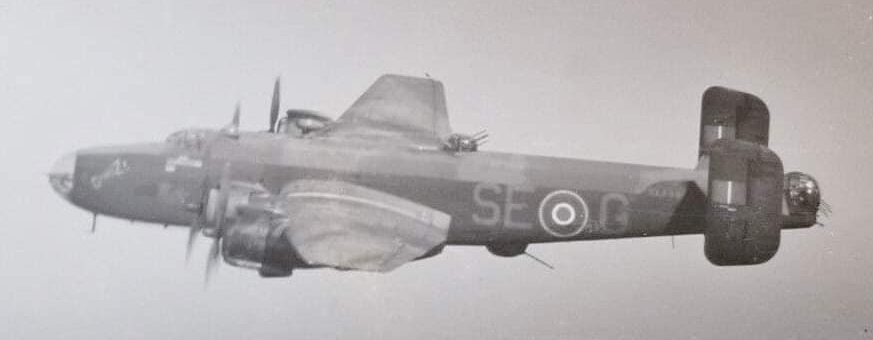 Bomber Command
Bomber Command  |
Aircrew Chronicles
|
Aircrew Losses
|
Nose Art
|
BCATP
|
Lancaster
|
Media
|
Aircrew Chronicles
|
Aircrew Losses
|
Nose Art
|
BCATP
|
Lancaster
|
Media
 Bomber Command
Bomber Command  |
Aircrew Chronicles
|
Aircrew Losses
|
Nose Art
|
BCATP
|
Lancaster
|
Media
|
Aircrew Chronicles
|
Aircrew Losses
|
Nose Art
|
BCATP
|
Lancaster
|
Media
No. 6 Group and the Canadian Squadrons
Bomber Command


|
|
Initially formed at Burn near Selby on 11th November, 1942, No. 431 Squadron was a bomber unit with No. 4 Group flying Wellingtons. Any aircraft that carried markings beginning with "SE" indicated the plane belonged to 431 Squadron. The squadron crest featuring an Iroquois Native's head, the motto reading "The Hatiten Ronteriios" ("Warriors of the Air"). After being stationed briefly at Tholthorpe where the squadron was outfitted with the Halifax, 431 Squadron was transferred to Croft in December of 1943. The squadron remained in Croft for the remainder of World War II and was equipped with Lancasters at a later point. Over the course of the war 431 Squadron completed over 3000 operations across the European Theatre. Minnie Simcoe, a handcrafted doll that soon became the squadron's mascot, accompanied many crews as a good luck charm.
431 Squadron was reformed as "431 (Fighter) Squadron" during 1954. On 9 August 1977 the squadron was reformed again, this time as 431 Air Demonstration Squadron, which remains in existence today. The Snowbirds Demonstration Team has become a Canadian icon and continues to demonstrate superior teamwork, discipline, and dedication, often flying within a few feet of each other during their aerobatic manoeuvres.


